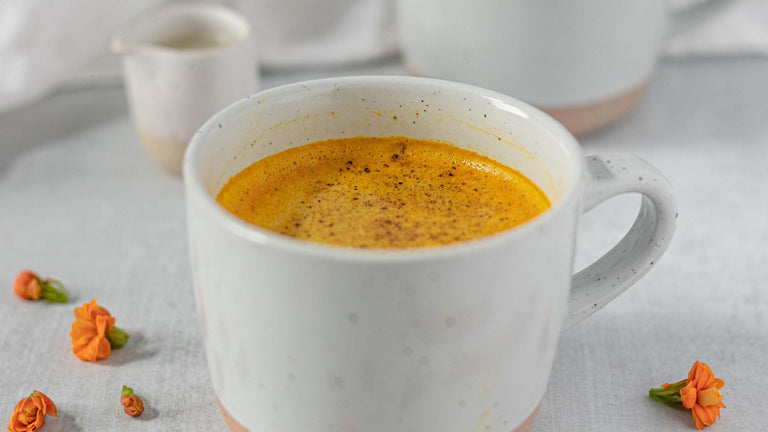When we were younger, turmeric or haldi, was relatively unknown in America. But all Indian households always have this staple spice in their pantry. It’s been a way to care for your body, both internally and externally, for thousands of years in the Indian subcontinent. Now the power spice seems to be the most popular spice around town and more people know about its multiple health benefits. Yay!
I’ll have to admit, as kids Shaz and I would get irritated at haldi staining our nails when we ate with our hands. Or potentially staining our clothes if we happened to be hanging out in the kitchen while our mom cooked and things spattered out of her frying pan. But boy, did we like the glow it left behind when we put on a turmeric and yogurt face mask. And we definitely felt better when we drank it with warm milk on winter mornings to stave off any colds. But now with all the studies and research showing how powerful this spice is, who cares about a little stain?
A quick background on turmeric:
Turmeric is a root and a member of the ginger family. The main active ingredient in turmeric, curcumin, gives its bright yellow color and is responsible for its healing properties.
There are a lot of things to discuss about turmeric, but for this article we want breakdown the best way to absorb the spice because it can be tricky.
According to scientific studies, curcumin has a low absorption rate and therefore a rather low bioavailability, meaning the good stuff is in there, but our bodies struggle to access it. Most of the curcumin is absorbed directly into the lining of the liver and stomach wall, as opposed to the bloodstream, where we want it in order to reap the health benefits. However, there are some solutions.
4 Ways to Increase Absorption of Turmeric:
1. Add PepperThe liver makes certain substances water soluble so they can more easily pass through our systems. But when we add pepper, high in a compound called piperine, the absorption of the curcumin is slowed down, thanks to the drug inhibiting components of piperine. So eating turmeric with pepper increases the absorption, it’s been reported, up to 2000%.
2. Eat With Good Fats
Turmeric is fat soluble—meaning it dissolves in fats. Without the fats binding it, the turmeric struggles to make it through the liver and stomach without being absorbed prematurely, and into the small intestines where it can be transferred through to the blood. So, by eating the turmeric with good fats, like avocado, olive oil or coconut oil, you’re more likely to absorb more of it into your bloodstream. This is also why turmeric is commonly mixed with warm milk—any kind of milk including coconut, cow, almond.
3. Eat With Quercetin-Rich Foods
Foods like apples, berries, red grapes (that includes a glass of red wine for dinner with your turmeric curry:)) and onions, all contain a plant pigment known as quercetin. This flavonoid inhibits the enzyme that inactivates curcumin. Adding turmeric to quercetin-rich foods can increase the absorbability of turmeric.
4. Heat It Up
Heat is said to increase the solubility of curcumin by 12 times, which may also increase its bioavailability in the body. So make sure to not just sprinkle it it raw in a cold dish.
It should also be highlighted that high quality turmeric (like any food) is a must-have in order to really absorb its full goodness. We love Diaspora Co., a women-owned company that responsibly sources turmeric directly from farmers in India.
Photo by Sarah Gualtieri on Unsplash









